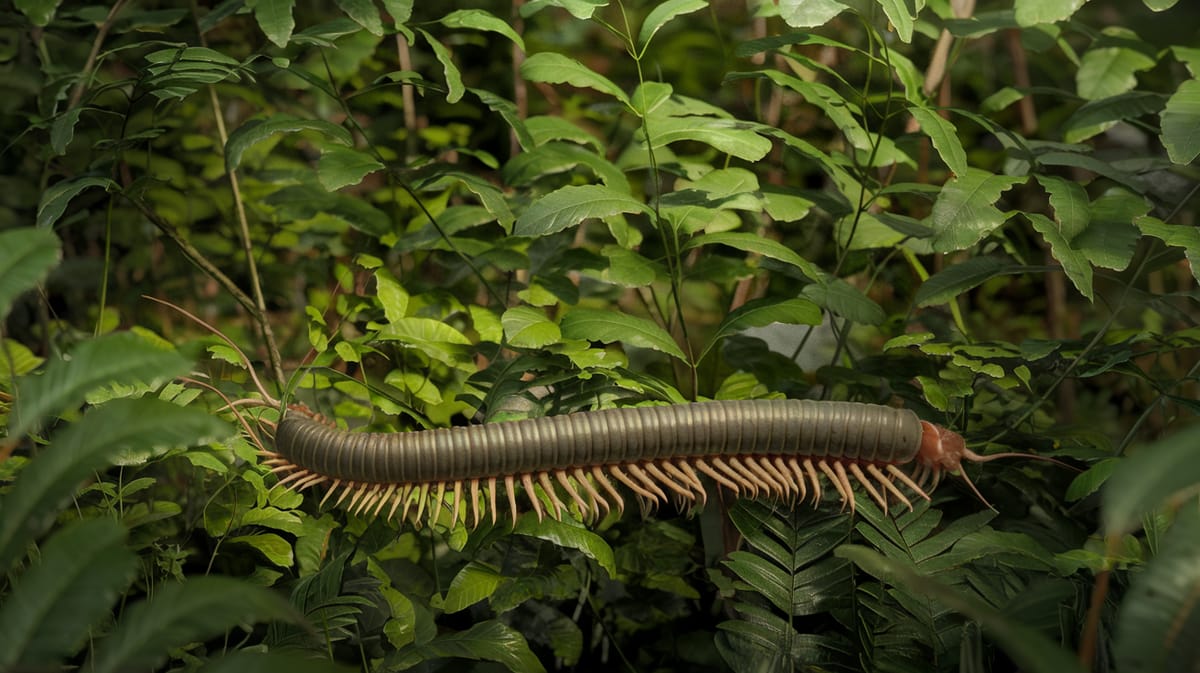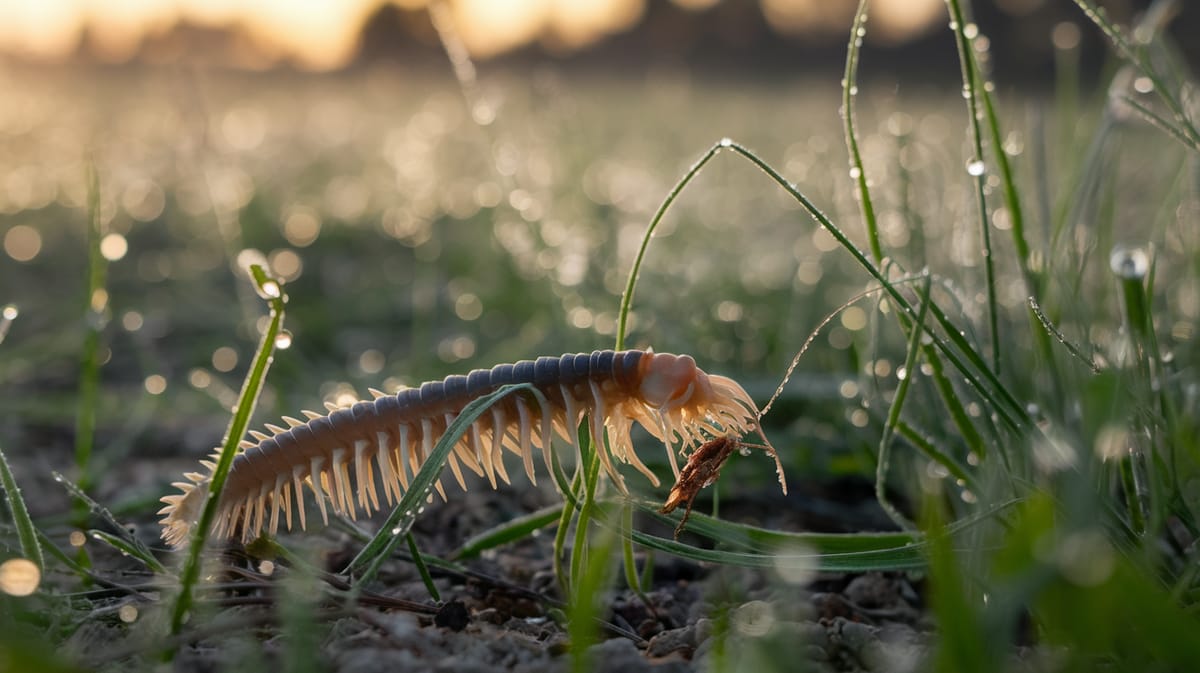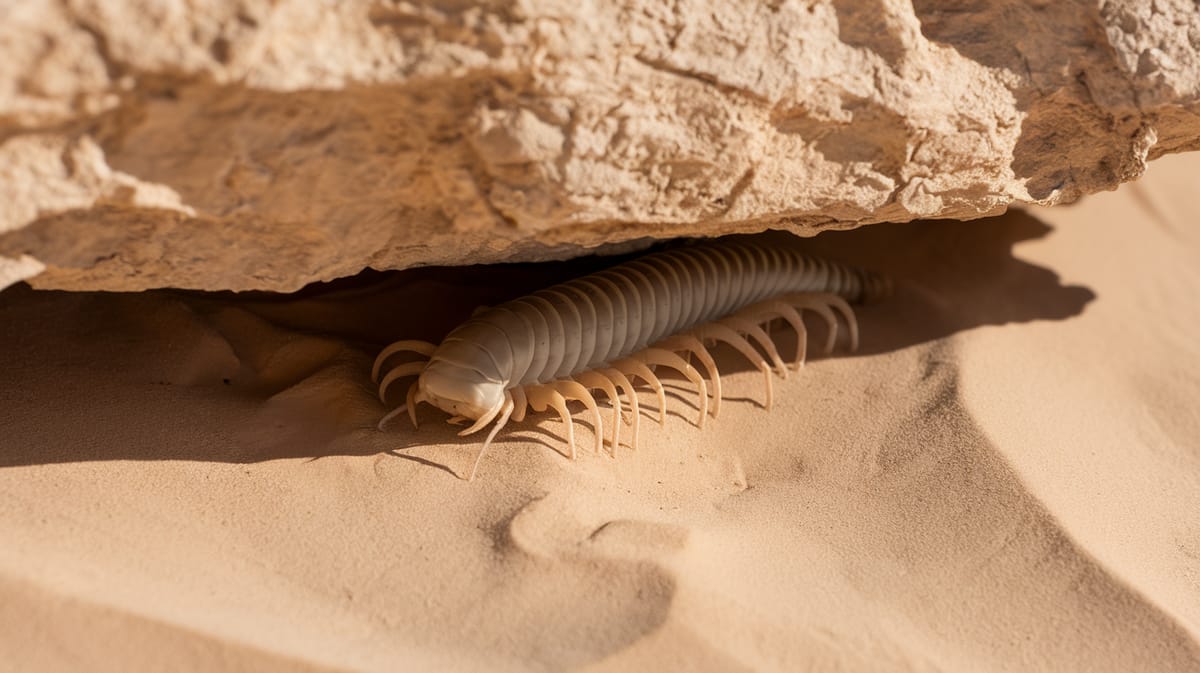Centipede
Swift and agile, the Centipede is a nocturnal predator with a venomous bite and numerous legs that aid in its hunt for prey. With their vital role in controlling pest populations, centipedes maintain ecological balance.

Key Insights at a Glance
Did You Know?
Taxonomy & Classification
Centipedes are agile predators with elongated bodies and venomous claws, adapted for hunting in diverse environments. Let's understand the evolutionary journey and classification of these remarkable predators.
Species Diversity
Centipedes comprise over 3,000 species globally, with the Scolopendra genus known for its large and colorful members.
Ancient Origins
Centipedes have existed for over 430 million years, showcasing resilience and adaptability through major evolutionary events, including terrestrial colonization.
Lifecycle and Growth
A remarkable journey of transformation from Egg to Adult.
Egg
Centipede eggs are laid in moist soil, where they remain hidden and protected until hatching.
Nymph
Nymphs resemble smaller versions of adults, molting multiple times to gradually develop more legs and mature features.
Adult
Adult centipedes are fully developed with numerous legs, specialized for hunting and reproducing in their habitat.
Dietary Habits
A skilled predator with remarkable hunting abilities, it captures insects, small vertebrates, and opportunistic prey with precision.
| DIET TYPE | DESCRIPTION |
|---|---|
| Primary Diet | Feeds mainly on insects like beetles, spiders, and worms, using venomous fangs to immobilize prey. |
| Secondary Diet | Consumes small vertebrates such as frogs and lizards, supplementing its diet when these are available. |
| Occasional | Occasionally feeds on small birds and rodents, taking advantage of these opportunities in scarce environments. |

Behaviour and Adaptations
Discover the fascinating adaptations that make the Centipede a formidable predator in its environment.
Venomous Bite
Delivers a potent venom to subdue prey effectively.
Rapid Movement
Swiftly navigates complex terrains to catch prey or escape threats.
Regeneration Ability
Capable of regenerating lost limbs over time.
Ecosystem Impact
Centipedes play a crucial role in maintaining ecological balance by providing essential services in their habitats.
Natural Pest Control
Centipedes manage pest populations by preying on insects that harm plants.
Soil Aeration
By burrowing, centipedes help aerate soil, enhancing nutrient and water absorption.
Food Web Support
Centipedes serve as a food source for birds and small mammals, linking different trophic levels.
Conservation Challenges
Understanding and addressing the major threats to centipede populations.
Habitat Destruction
Urban development and deforestation drastically reduce suitable habitats for centipedes.
Pesticide Use
Widespread pesticide application threatens centipede populations by contaminating soil and food sources.
Climate Change
Altered weather patterns disrupt centipede habitats and lifecycle processes.
Frequently Asked Questions
How long do Centipede live?
Centipedes typically live between 1 to 6 years, depending on the species and environmental conditions. Some can live longer in captivity or ideal habitats.
What do Centipede eat?
Centipedes are carnivorous and primarily eat insects, spiders, and other small invertebrates. They use their venomous forcipules to subdue prey.
Are Centipede poisonous?
Centipedes are venomous, not poisonous. They inject venom through their forcipules to immobilize prey. While their bite can be painful to humans, it is not typically dangerous unless an allergic reaction occurs.
Are Centipede endangered?
Most centipede species are not endangered. They are adaptable and found worldwide. However, habitat loss and environmental changes can impact local populations.
What do Centipede symbolize?
Centipedes often symbolize protection, healing, and balance in various cultures. They are seen as powerful creatures due to their resilience and ability to fend off threats.
Do Centipede bite?
Yes, centipedes can bite humans if threatened. Their bite can cause pain, redness, and swelling. It is generally not harmful to healthy adults but can be severe for those allergic.
What color are Centipede?
Centipedes range in color from yellow to dark brown, often with darker stripes or markings. Their coloration helps them blend into their environment for protection.
Does a Centipede have wings?
No, centipedes do not have wings. They rely on their many legs to move quickly across surfaces.
What does a Centipede look like?
Centipedes have elongated, segmented bodies with one pair of legs per segment. They have antennae, a flattened body, and typically a pair of venomous claws.
Is a Centipede an insect?
No, centipedes are not insects. They are arthropods belonging to the class Chilopoda. Unlike insects with three body segments and six legs, centipedes have multiple body segments and numerous legs.
Related Insects
Discover insects with similar characteristics to Centipede - including shared habitats, diets, and taxonomic classifications
Share this profile
Help others discover Centipede
